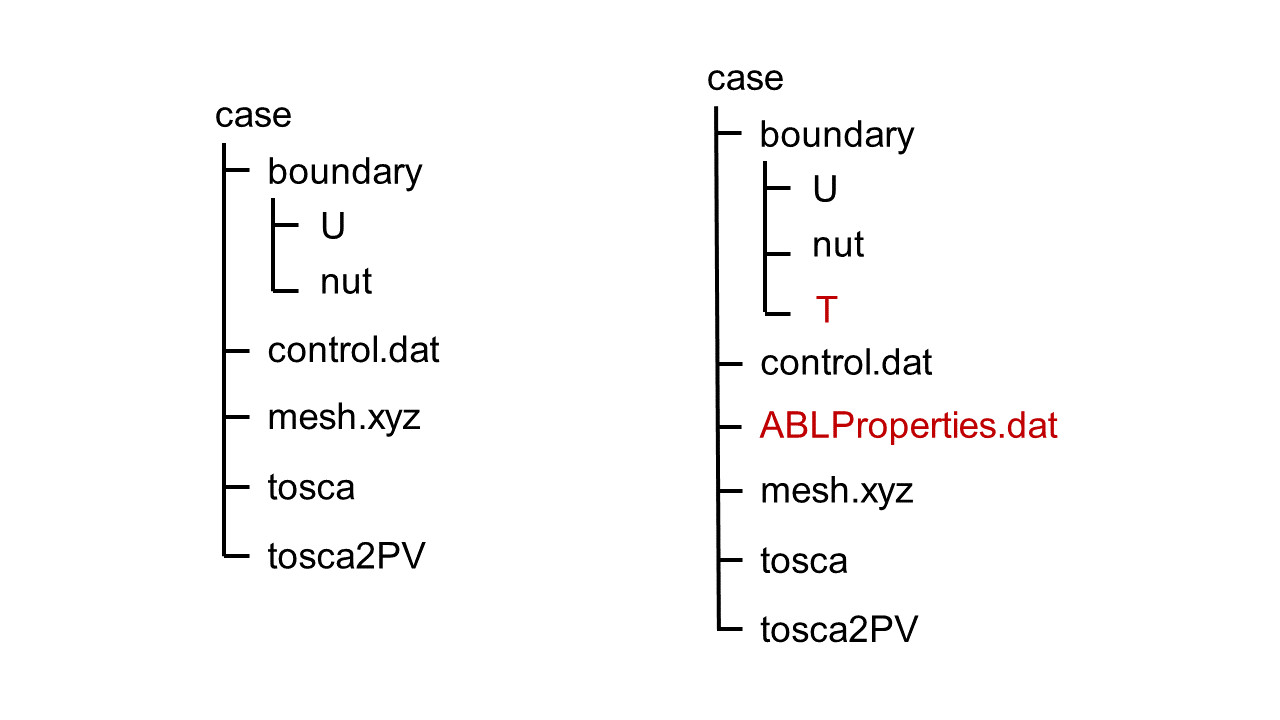User Guide
TOSCA uses ASCII input files, organized in files and dictionaries. The code provides some level of input checking, meaning that non-recognized inputs are followed by an error message that lists available possibilities.
TOSCA has a standardized case structure. The minimum-required case structure is depicted on the left of the following figure,
while the case structure required to run e.g. atmospheric boundary layer (ABL) with potential
temperature stratification is shown on the right (i.e. with the addition of the boundary/T and ABLProperties.dat files).
The principal control file for a TOSCA simulation is the control.dat file, located in the case directory (see
control.dat for details).
Depending on the type of simulation that one wishes to perform, flags can be activated in the control.dat, which prompt TOSCA
to read additional input files and data.

A complete list of entries to all TOSCA input files is contained in Sec. Input Files. Sec. Spatial Mesh describes the two mesh formats available in TOSCA, and explains how boundary patches are identified using curvilinear coordinates, in which TOSCA is formulated. Sec. Overset Mesh explains how to set up TOSCA cases with one-way nested domains (i.e. the overset mesh technique) and Sec. Data Acquisition System details the various outputs that the user can extract from different kinds of simulations using TOSCA’s acquisition system. Finally, Sec. Execution shows a typical TOSCA workflow, where the solution is first performed using tosca executable, the simulation is then possibily restarted and tosca2PV is used in the end to convert output binary data into .xmf format to be inspected in ParaView.